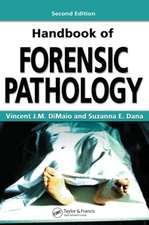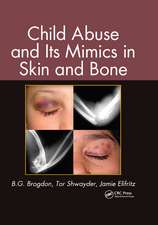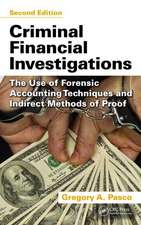Classics in Environmental Criminology
Editat de Martin A. Andresen, Paul J. Brantingham, J. Bryan Kinneyen Limba Engleză Hardback – 25 mai 2010
Defines the field
Divided into three parts, the book begins by highlighting the development of environmental criminology as a discipline through its origins in spatial criminology. It examines social disorganization theory, which explains criminal activity with reference to the characteristics of the community that delinquents live in. It then discusses the ecology of crime with reference to macroenvironments and microenvironments. The next section introduces concepts such as routine activity theory, the geometric theory of crime, the rational choice theory of offending, and crime pattern theory.
Offers perspectives on prevention
The last part focuses on the concept of crime prevention, examines the idea of altering the environment in order to prevent crime, and discusses situational crime factors and efforts to reduce the opportunities for crimes to be committed. It considers the impact of routine activities on crime prevention initiatives and advocates a flexible approach to crime prevention based on the dynamic nature of our environment. The book concludes with a chapter outlining how environmental criminology has evolved in recent years and provides a future outlook on where it may be headed.
Invaluable as a textbook and as a professional reference, this volume is a comprehensive survey of a critical field in contemporary criminological theory. Offering insight assembled by top academic figures within the criminology community, this work is destined to provoke further inquiry and research.
Preț: 908.23 lei
Preț vechi: 1107.59 lei
-18% Nou
Puncte Express: 1362
Preț estimativ în valută:
173.79€ • 181.91$ • 144.65£
173.79€ • 181.91$ • 144.65£
Carte tipărită la comandă
Livrare economică 31 martie-14 aprilie
Preluare comenzi: 021 569.72.76
Specificații
ISBN-13: 9781439817797
ISBN-10: 1439817790
Pagini: 552
Ilustrații: 66 black & white illustrations, 84 black & white tables
Dimensiuni: 156 x 234 x 36 mm
Greutate: 0.94 kg
Ediția:1
Editura: Taylor & Francis
Colecția Routledge
Locul publicării:Oxford, United Kingdom
ISBN-10: 1439817790
Pagini: 552
Ilustrații: 66 black & white illustrations, 84 black & white tables
Dimensiuni: 156 x 234 x 36 mm
Greutate: 0.94 kg
Ediția:1
Editura: Taylor & Francis
Colecția Routledge
Locul publicării:Oxford, United Kingdom
Public țintă
Academics and students in geographic and urban crime studies, criminal justice, crime mapping, and geographical profiling.Cuprins
Early Work on the Ecology of Crime. The Place of Environmental Criminology within Criminological Thought. Of the Development of the Propensity to Crime (1842). Localities of Crime in Suffolk (1856). Juvenile Delinquency in a Small City (1916). Juvenile Delinquency and Urban Areas: A Study of Rates of Delinquency in Relation to Differential Characteristics of Local Communities in American Cities (1969). Urban Ecological Aspects of Crime in Akron (1974). Intraurban Crime Patterns (1974). Classics in Environmental Criminology. Social Change and Crime Rate Trends: A Routine Activity Approach (1979). Routine Activities and Crime: An Analysis of Victimization in Canada (1990). Notes on the Geometry of Crime (1981). The Use of Space in Burglary (1985). Nodes, Paths, and Edges: Considerations on the Complexity of Crime and the Physical Environment (1993). Modeling Offenders’ Decisions: A Framework for Research and Policy (1985). Linking Criminal Choices, Routine Activities, Informal Control, and Criminal Outcomes (1986). Understanding Crime Displacement: An Application of Rational Choice Theory (1987). Environment, Routine, and Situation: Toward a Pattern Theory of Crime (1993). Environmental Criminology and Crime Prevention. A Conceptual Model of Crime Prevention (1976). Crime Prevention and Control through Environmental Engineering (1969). Criminal Behavior and the Physical Environment: A Perspective. Situational Crime Prevention: Theory and Practice. Routine Activities and Crime Prevention in the Developing Metropolis (1987). Future Spaces: Classics in Environmental Criminology—Where Do We Go from Here? References. Index.
Notă biografică
Martin A. Andresen is an Assistant Professor at Simon Fraser University School of Criminology. His areas of interest are spatial crime analysis, geography of crime, environmental criminology, applied spatial statistics and geographical information analysis, and (critical) quantitative methods.
Paul J. Brantingham is a Professor at Simon Fraser University School of Criminology. His areas of interest are computational criminology, environmental criminology, the ecology of crime, crime analysis, historical criminology, comparative criminal justice, legal aid, and related matters.
J. Bryan Kinney is an Assistant Professor at Simon Fraser University School of Criminology. His areas of interest are environmental criminology theory, geography of crime, police studies, crime prevention and crime reduction, and quantitative research methods.
Paul J. Brantingham is a Professor at Simon Fraser University School of Criminology. His areas of interest are computational criminology, environmental criminology, the ecology of crime, crime analysis, historical criminology, comparative criminal justice, legal aid, and related matters.
J. Bryan Kinney is an Assistant Professor at Simon Fraser University School of Criminology. His areas of interest are environmental criminology theory, geography of crime, police studies, crime prevention and crime reduction, and quantitative research methods.
Descriere
A comprehensive collection of seminal pieces on environmental criminology, this work focuses on the role that the immediate environment plays in the occurrence of a crime. Legendary contributors demonstrate that a careful analysis of environmental factors is key to understanding the causes of crime, solving crimes, and helping to predict and prevent them. Topics covered include routine activity theory, the geometric theory of crime, the rational choice theory, and the pattern theory of crime. Invaluable as a textbook and as a professional reference, this volume also explores concepts related to crime prevention.












